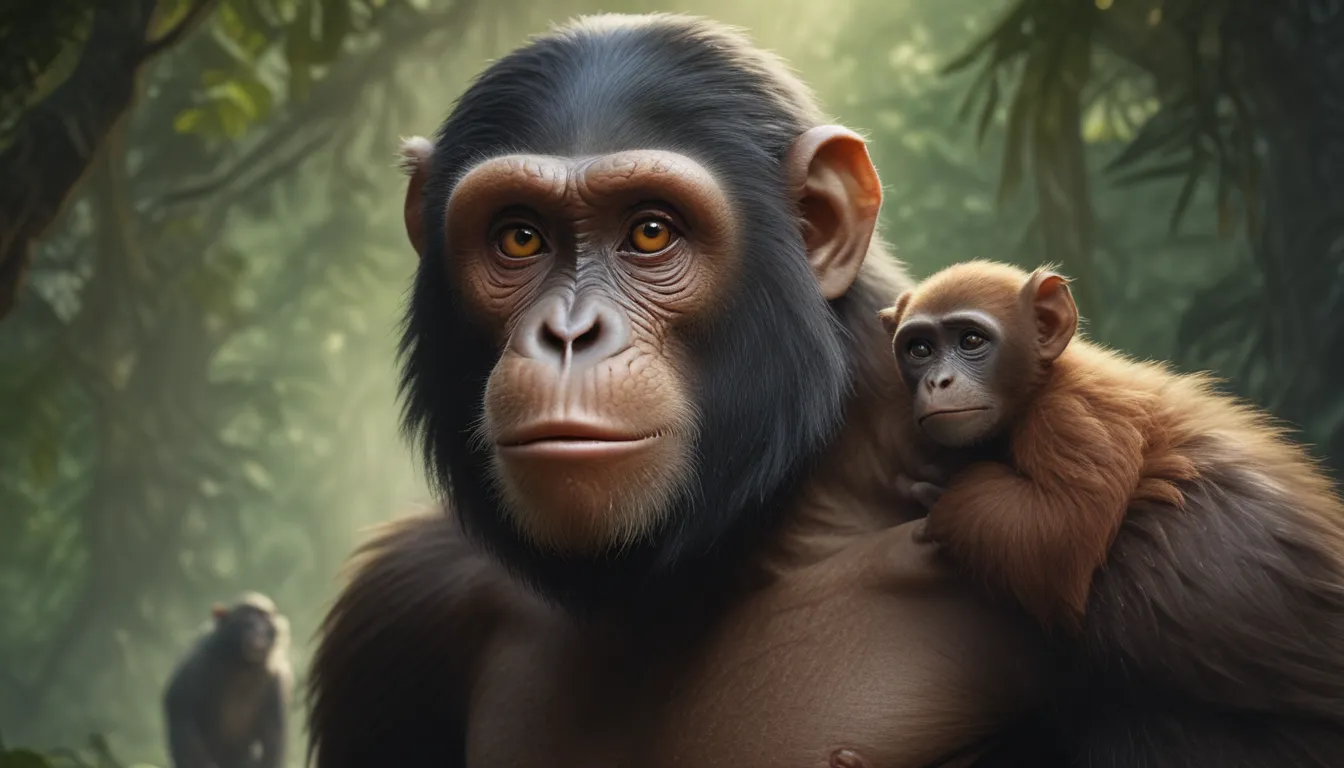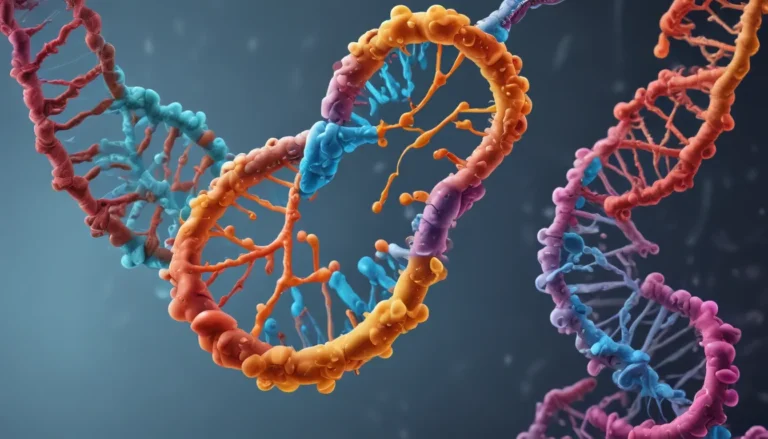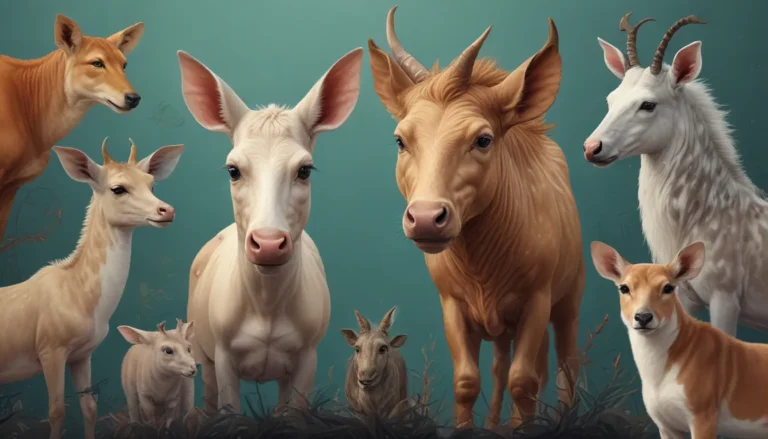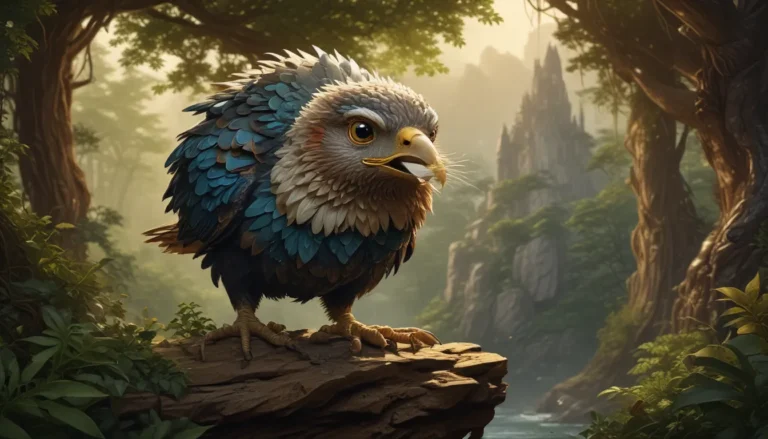A Note About Images: The images used in our articles are for illustration purposes only and may not exactly match the content. They are meant to engage readers, but the text should be relied upon for accurate information.
Primates, the diverse group of mammals encompassing lemurs, monkeys, and apes, have long captured the intrigue of scientists and enthusiasts alike with their complex behaviors and incredible diversity. Exploring the evolution of primates not only sheds light on our own origins but also offers insights into the intricate tapestry of life on Earth. In this article, we will embark on a remarkable journey through time, uncovering 14 enigmatic facts about primate evolution that will leave you in awe of the astonishing transformations these creatures have undergone over millions of years.
Unlocking the Clues of Primate Evolution
Primate evolution is a fascinating narrative, akin to a thrilling detective story where clues are hidden in fossils and DNA. The journey of our ancestors adapting to their environments and paving the way for modern humans is awe-inspiring. Climate change, genetic mutations, and social behavior have all played pivotal roles in shaping the evolution of primates, weaving together a tapestry where each piece tells a compelling story of survival and change.
The Close Genetic Connection Between Primates and Humans
One of the most captivating aspects of primate evolution is the intimate genetic and anatomical link between primates and humans. Shared features such as forward-facing eyes, grasping hands, and complex social behaviors underscore the common ancestry that binds us together, highlighting the fascinating relationship between our species and our closest animal relatives.
A Divergence in Evolution: Old World vs. New World Monkeys
Approximately 40 million years ago, a significant evolutionary schism occurred, leading to the divergence of Old World monkeys, found in Africa and Asia, from New World monkeys, inhabiting South and Central America. This split resulted in the development of distinct physical and behavioral traits in these two distinct primate groups, offering insights into the diverse paths taken by primates in their evolutionary journey.
Unveiling the Family of Great Apes: Hominids
Hominids, the family of great apes encompassing orangutans, gorillas, chimpanzees, and humans, underwent a gradual evolution over millions of years, with each species adapting to their unique ecological niches. The emergence of hominids marked a significant transition in primate evolution, paving the way for the diverse array of species we see today.
Meet Australopithecus: The Earliest Known Hominid
Australopithecus, a genus dating back approximately 4 million years, represents the earliest known hominid species. These bipedal primates played a crucial role in the development of upright walking, a defining characteristic of human evolution that set the stage for further adaptations and innovations in our evolutionary lineage.
The Enigma of Homo habilis: The “Handy Man”
Homo habilis, or “handy man,” existed around 2.4 to 1.4 million years ago, showcasing remarkable advancements in tool-making abilities. Considered one of the first early humans, Homo habilis remains a subject of debate regarding its classification as either a human or an ape due to its unique characteristics and capabilities.
Exploring the Mystery of Homo erectus: The “Upright Man”
Homo erectus, known as the “upright man,” roamed the Earth from approximately 1.9 million to 143,000 years ago. Believed to be the first hominid species to migrate out of Africa, Homo erectus expanded its range to other regions, although the specific reasons behind this dispersal remain shrouded in mystery, adding another layer of intrigue to the evolutionary puzzle.
Discovering Neanderthals: Our Closest Extinct Kin
Neanderthals, an ancient human group that existed from around 400,000 to 40,000 years ago, are our closest extinct relatives. Despite historical depictions portraying them as brutish and unintelligent, evidence suggests that Neanderthals possessed complex social structures and engaged in symbolic behaviors, challenging stereotypes and highlighting the richness of their evolutionary journey.
The Triumph of Homo sapiens: Modern Humans
Homo sapiens, or modern humans, emerged approximately 300,000 years ago and have exhibited remarkable success in terms of survival and adaptability. Our capacity for communication, innovation, and societal organization has propelled us to become the dominant species on Earth, marking a testament to the evolutionary accomplishments of our primate ancestors.
Climate Change and Primate Evolution: A Symbiotic Relationship
Throughout history, climate change has played a pivotal role in shaping primate evolution. Fluctuations in temperature and environmental conditions have influenced the distribution and adaptations of primate species, driving diversification and extinction events that have sculpted the evolutionary landscape of primates over time.
Genetic Mutations: The Driving Force of Evolution
Genetic mutations have served as crucial catalysts for primate evolution, resulting in genetic variations that bestow advantageous traits such as enhanced cognitive abilities or heightened disease resistance. These mutations drive evolutionary changes within populations, facilitating adaptations that enhance the survival and success of primate species.
Social Behavior: A Cornerstone of Primate Evolution
Social behavior stands as a cornerstone of primate evolution, shaping the trajectory of species through complex social structures, cooperation, and communication. These intricate social dynamics have played a pivotal role in the survival and prosperity of various primate species, underscoring the significance of social bonds in the evolutionary journey.
Delving into Fossil Records: Windows to the Past
Fossil records provide invaluable insights into primate evolution, enabling scientists to reconstruct the history of our ancestors and unravel the intricate tapestry of evolutionary transitions. Discoveries of ancient primate fossils have expanded our knowledge of the evolutionary timeline, offering compelling evidence for the existence of diverse hominid species and shedding light on their evolutionary trajectories.
Decoding Evolution Through DNA Analysis
The advent of DNA analysis has revolutionized our understanding of primate evolution, enabling scientists to compare genetic sequences across various primate species and unravel the genetic changes that have transpired over millions of years. This cutting-edge technology unveils the intricate genetic relationships between different primate species, offering unparalleled insights into the evolutionary connections that bind us to our primate kin.
The Quest for Missing Links: Bridging Gaps in Evolutionary History
While significant progress has been made in elucidating our primate origins, there remain elusive missing links in the evolutionary chain. Scientists persist in the search for transitional fossils and genetic evidence that can bridge these gaps, further enriching our understanding of the intricate evolutionary journey that has shaped the diversity of life on Earth.
Conclusion: A Tapestry of Primate Evolution
In conclusion, primate evolution stands as a captivating and nuanced narrative that continues to captivate scientists and researchers worldwide. From the emergence of early primate ancestors to the evolutionary triumph of modern humans, the journey of primates unveils a tapestry of adaptation, innovation, and enduring resilience. By unraveling the enigmatic facts of primate evolution, we gain profound insights into our own origins and the rich tapestry of life that envelops our planet. As we delve deeper into the mysteries of primate evolution, we foster a deeper appreciation for the remarkable diversity and interconnectedness of all living beings, underscoring the importance of conservation efforts to safeguard the legacy of our primate ancestors.
FAQs: Exploring More about Primate Evolution
Q: What is primate evolution?
A: Primate evolution refers to the gradual process through which primates, including humans, apes, monkeys, and prosimians, have evolved and adapted over millions of years.
Q: How do fossils assist in understanding primate evolution?
A: Fossils serve as crucial evidence of ancient primate species, allowing scientists to study their physical attributes and trace their evolutionary history through the geological ages.
Q: Why is the opposable thumb significant in primate evolution?
A: The opposable thumb played a pivotal role in primate evolution by enabling them to grasp and manipulate objects with precision, fostering the development of complex tool use and manual dexterity.
Q: What is the significance of color vision in primate evolution?
A: Color vision offered primates the ability to discern ripe fruits, locate potential mates, and navigate intricate environments, providing an evolutionary advantage in their quest for survival and adaptation.
Q: How do primates communicate?
A: Primates communicate through a diverse array of vocalizations, body language, facial expressions, and gestures. Some species even exhibit the use of tools and engage in symbolic communication to convey messages.
Q: What is the importance of primate conservation?
A: Primate conservation is pivotal in preserving biodiversity, safeguarding endangered species, and upholding the delicate balance of ecosystems. It also enhances our comprehension of human evolution and underscores the interconnectedness of all life forms.
Q: Are primates at risk of extinction?
A: Yes, many primate species face the threat of extinction due to habitat loss, deforestation, poaching, and climate change. Conservation efforts are indispensable in ensuring the survival and protection of these vulnerable species for future generations.
As we reflect on the enthralling journey of primate evolution, let us celebrate the remarkable strides and adaptations that have sculpted the diverse tapestry of life on Earth. Through our exploration of these enigmatic facts, we deepen our understanding of our origins and cultivate a profound reverence for the intricate web of life that surrounds us. Join us in unraveling the mysteries of primate evolution and embracing the awe-inspiring beauty of our evolutionary heritage.






